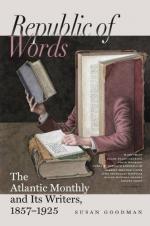“I hope I may be able to return to this place; for, to assist in directing attention to Jerusalem, and thus to render the Bible more easily understood, seems to me to be a humble way in which, perhaps, I may aid in doing some good.”
Here is a portion of a letter written in England:—“The railway from Farnborough went through a most beautiful country,—by Guildford, Dorking, and Boxhill. While I was at Farnborough, on the bridge, sketching, a respectably-dressed man came up and touched his hat. After standing a minute or two, he said, ’So you are doing something in my line, Sir?’—’What!’ said I, ’are you an artist?’—’Well, Sir, I cannot venture to call myself an artist, but I gets my living by making drawings. I makes ’em in pencil.’—I asked him if he took portraits.—’I does every line, portraits and all; but I don’t get many portraits since the daguerreotype came in. No, Sir, my drawings are principally in the sporting line. I does portraits of gentlemen going over a fence or a five-barred gate. I does ’em all in pencil, and puts a little color on their faces, but all the rest in pencil,—d’ye see?’—’Yes; but do you make a good living?’—’Well, not much of that; I used to earn a good deal more money when I did portraits at sixpence each than I do now.’—I said, ’I suppose you begin to see that you can do better, and it takes you longer.’—’That’s just it; you’ve hit it, Sir. I used to knock them off in a quarter or half an hour, and now it takes me seven or eight days to do a sporting piece.’—So I told the poor man that I would willingly give him advice, but I was afraid it would ruin him completely, for that afterwards he would have to take two or three months.—’Yes, Sir, I sees that; but I am too old now to learn a new line. But I find trees very hard; I can’t manage them.’—So I sat down, and drew a branch of a tree, which he said was very much in his style; and I gave him some advice which I thought might help him, and the good man went away so much obliged.”
When the news of Mr. Seddon’s death reached England, it was at once felt by his friends that it was due to his memory that the public should be made better acquainted with the excellence of his works. An exhibition of them was accordingly made, and a subscription raised for the benefit of his widow, by purchasing his large picture of Jerusalem, to be presented to the National Gallery. The subscription was successful, and Seddon’s fame is secure.
“Mr. Seddon’s works,” says Mr. Ruskin, “are the first which represent a truly historic landscape Art; that is to say, they are the first landscapes uniting perfect artistical skill with topographical accuracy,—being directed with stern self-restraint to no other purpose than that of giving to persons who cannot travel trustworthy knowledge of the scenes which ought to be most interesting to them. Whatever degrees of truth may have been attempted or attained by previous artists have been more or less subordinate to pictorial or dramatic effect. In Mr. Seddon’s works, the primal object is to place the spectator, as far as Art can do, in the scene represented, and to give him the perfect sensation of its reality, wholly unmodified by the artist’s execution.”




